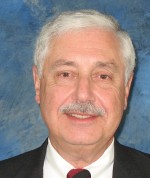Another revolution is afoot in the Constitution State, this one involving education.
A burgeoning three-prong approach that flips the time-learning equation on its head has rooted in a number of state districts and appears to be gaining traction. It downplays the calendar and embraces what is known as mastery-based learning.
“It”™s a reversal of the traditional way of thinking,” said Joseph Cirasuolo, executive director of the West Hartford-based Connecticut Association of Public School Superintendents, 108 years old and popularly called CAPSS. “Instead of earning a diploma by seat time, a student has to demonstrate that he or she has mastered the concepts.”

- Joseph Cirasuolo, executive director of the Connecticut Association of Public School Superintendents.
Cirasuolo, 74 years old, a Columbia University Ph.D. and a former teacher and superintendent, said, “I have attended many high school graduations. I”™ve seen the valedictorian who had learned everything. And then walking across the stage to a standing ovation comes the D-minus student that nobody thought would graduate. The difference in learning is so great you have to wonder what the diploma means.”
He said the shift does not involve a “cookie-cutter approach.” The Windsor Locks School District is the furthest along in the mastery-based method, Cirasuolo said. “It”™s not a wealthy suburban district and many of the students could be classified as poor. But they are moving in this direction with very good results.” He said the school districts of Wallingford, New Fairfield and Farmington also are using the system, “each in its own way. There is no cookie-cutter approach. This is very different than what we”™ve been doing.”
CAPSS membership includes 164 of the state”™s 165 school superintendents and Cirasuolo said, “We”™re working on No. 165; he”™s trying to come aboard.” Including its associate members and affiliated college professors, CAPSS represents a total 400 education professionals.
CAPSS”™ partnerships include the American Federation of Teachers CT, the Connecticut Education Association and the Connecticut Association of School Business Officials. Additionally CAPSS partners with the Connecticut Association of Boards of Education, the Connecticut Association of Schools, the Connecticut Business and Industry Association, Connecticut Coalition for Achievement Now and the Connecticut Council for Education Reform.
The push to have students advance only when they have mastered the topics at hand comes with a pair of nuances that are critical to success.
Cirasuolo said there are five to seven acknowledged different learning styles, including visual and auditory learning styles that are largely accommodated now. “With mastery-based learning, you teach the children in ways that align with their primary learning styles,” he said.
“By the time a 5-year-old arrives in kindergarten, that child has already learned a lot and they are all basically on the same plane,” he said. “But after a few years, we”™ll have slower students who need more time. We”™re not teaching them the way they learn.”
Another tool is student interest.
“As much as possible, mastery-based learning takes advantage of the students”™ interests,” he said. “For example, to assign a football book to a student who has no interest in football offers no foothold. But content that the student finds interesting receives a different welcome. It makes a heck of a lot of sense.”
Cirasuolo said CAPSS was successful in the 1980s lobbying to raise teacher salaries and quickly seeing better candidates apply for teaching jobs. CAPSS surveys at the time indicated “I cannot earn enough as a teacher” was the biggest obstacle to becoming one. “We were not alone in that effort,” he said. “We worked with other organizations to get it done.
“The same across-the-board effort is required for mastery-based learning,” he said. “Like the professor said, ”˜This is not easy.”™”




















